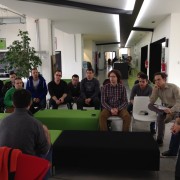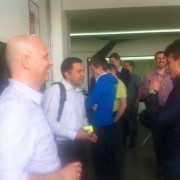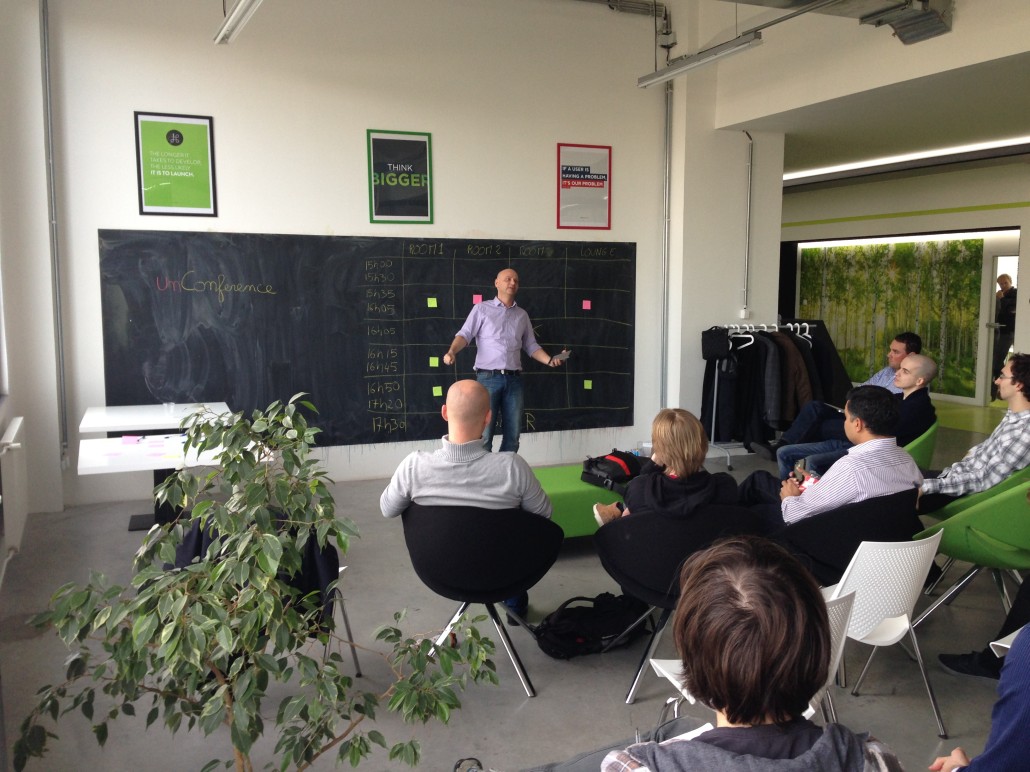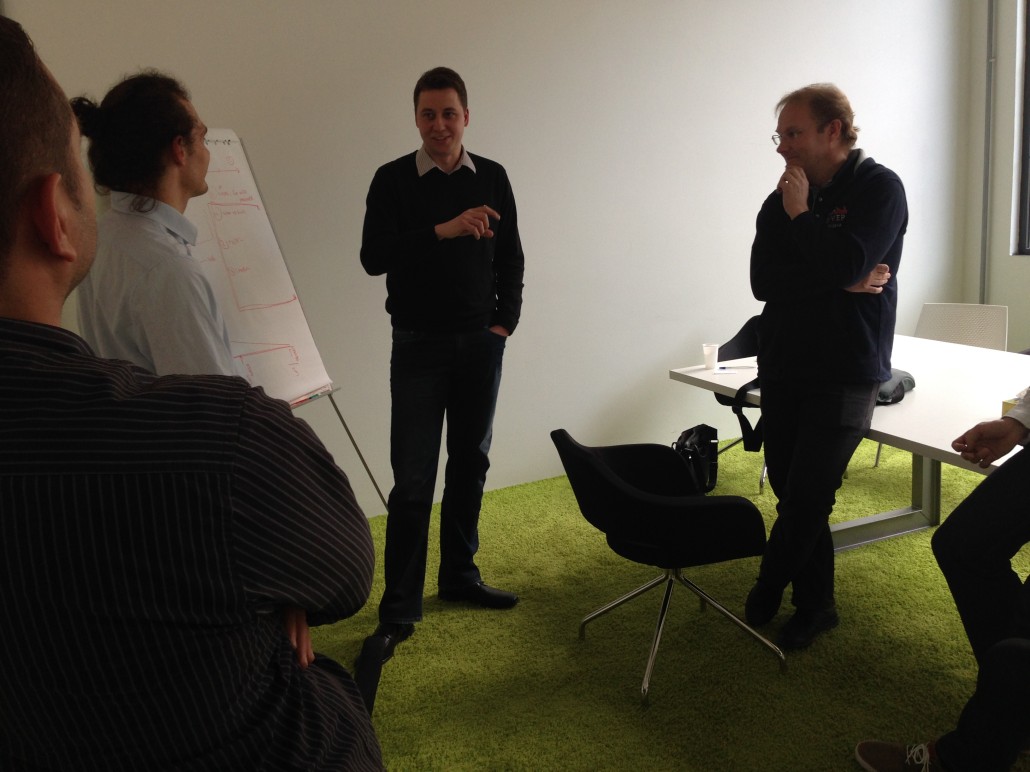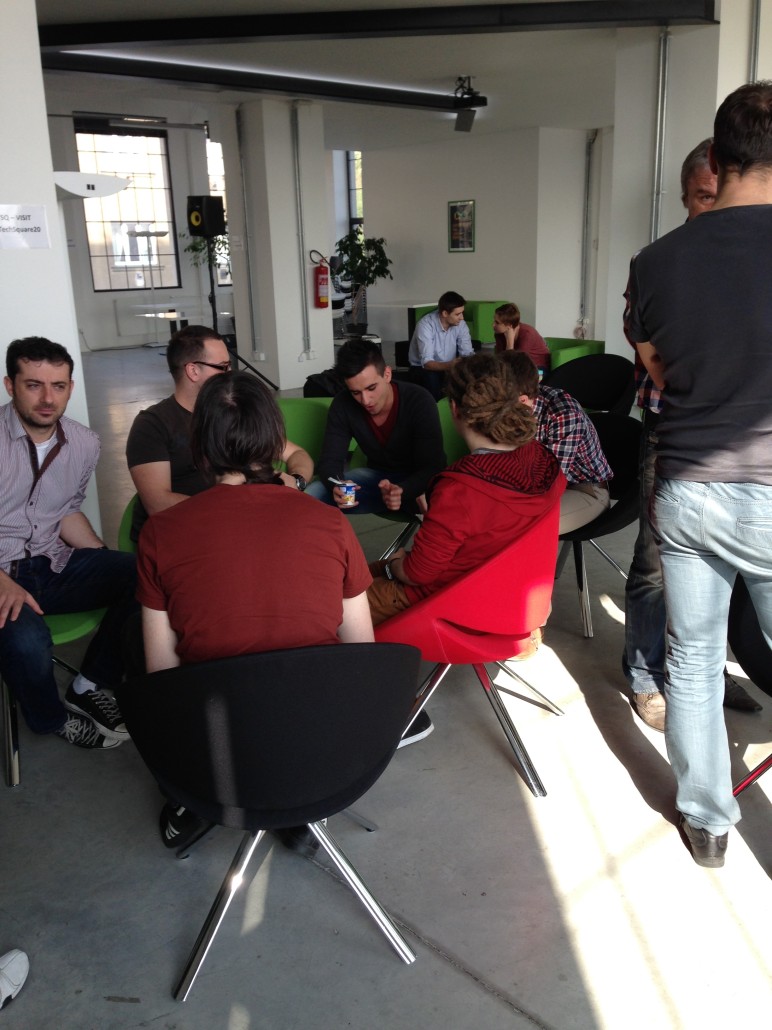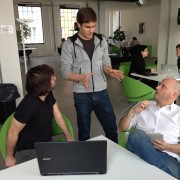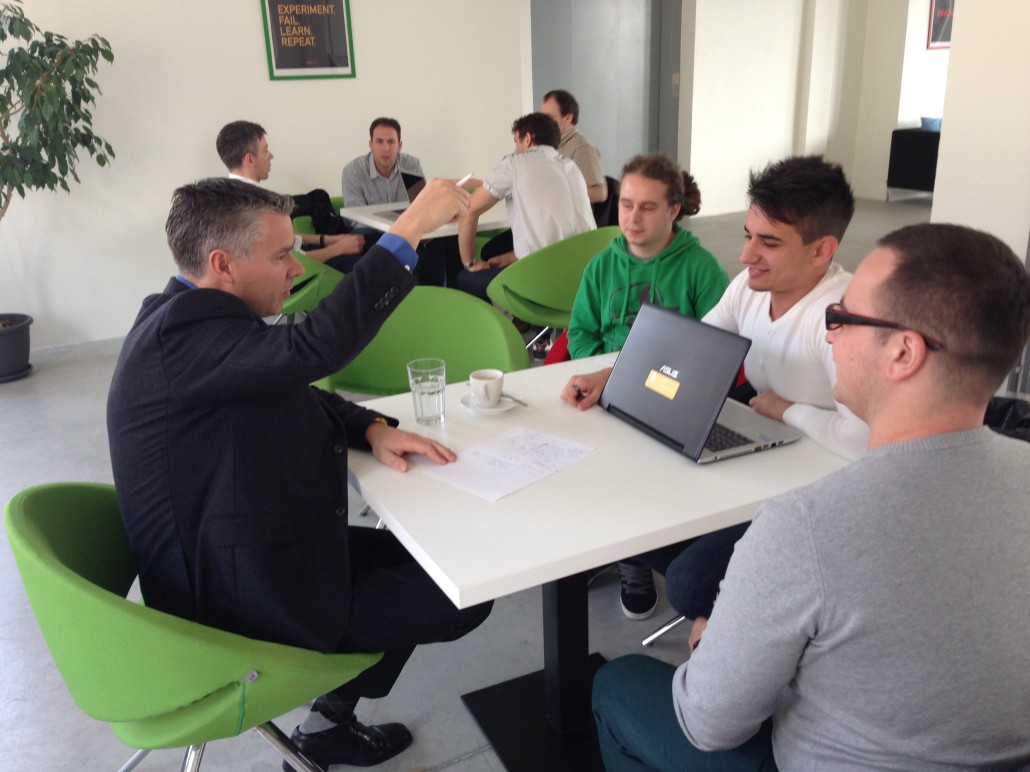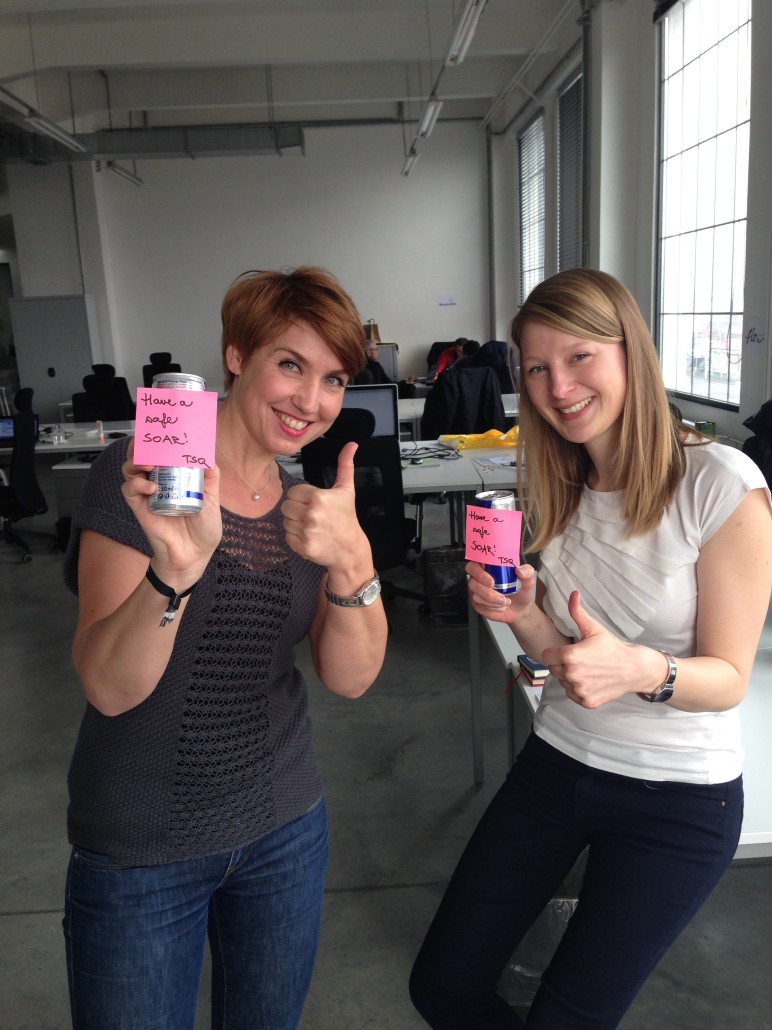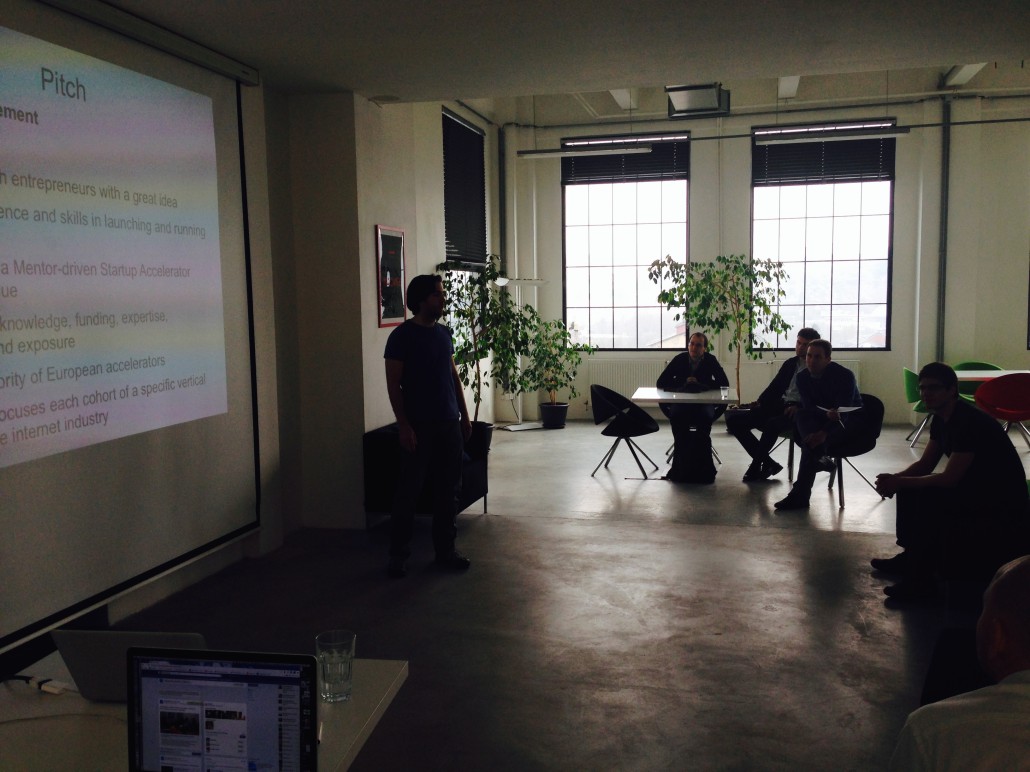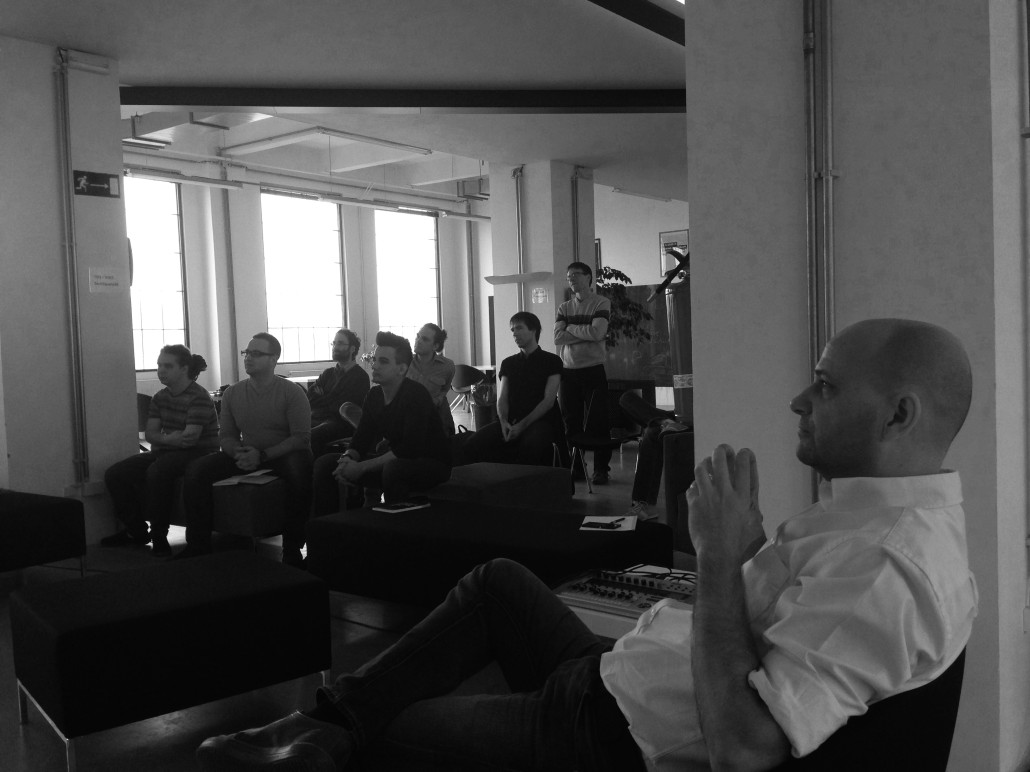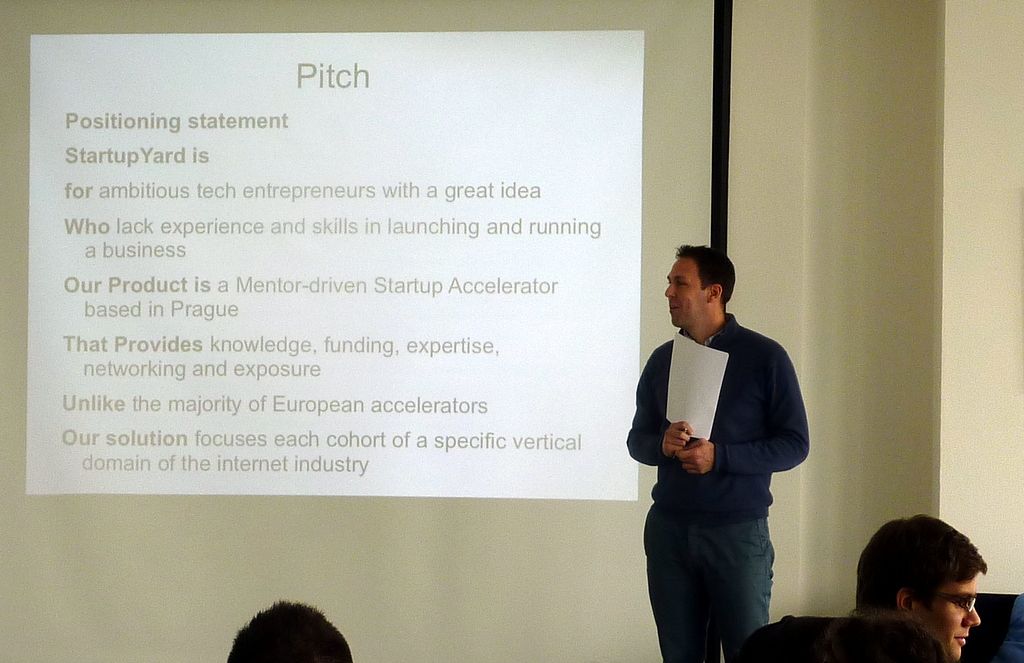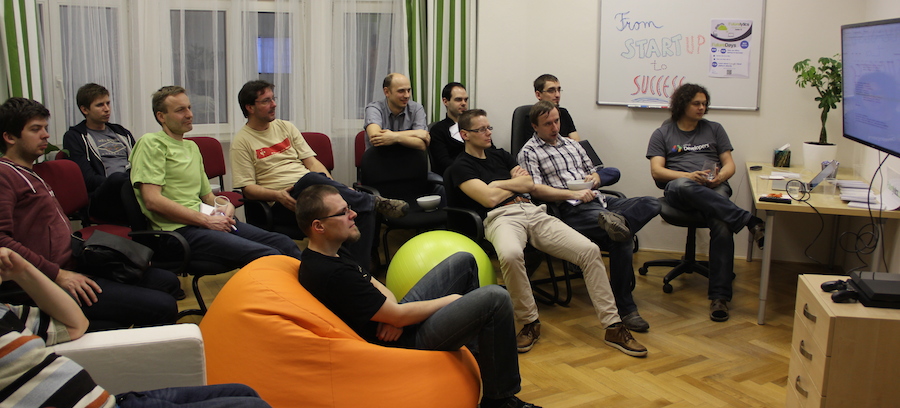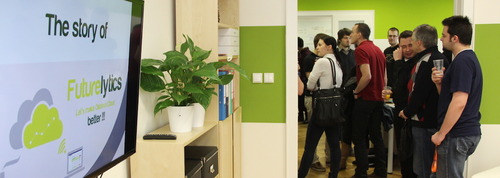Presenting the 7 Teams of StartupYard 2014
Following a month of intense mentoring, all 7 of StartupYard’s Spring 2014 teams are ready to meet the world. While each of them come from a unique place, and a unique period of development, some with a massive code-base and near-complete products, and others without even a name, all of the teams have made impressive progress in the past month.
Demo Day
On June 18th, all of these teams will present their products, and several will officially launch, during StartupYard’s Demo Day, taking place in Prague. Those interested can already book their ticket at this address
And Now, The Teams, and Why We Chose Them
Below is a review of the teams, with links to their websites, and a short ‘position statement’ description of each. Then we’ll go deeper, and talk about why we chose these teams, and how each has met the challenge that we made when we invited them to join us in Prague last month. The teams are presented in alphabetical order.
Evolso.com – Romania
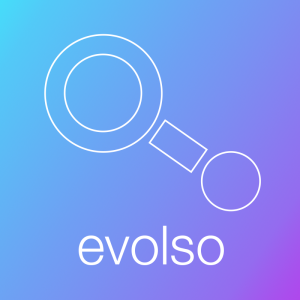
Evolso is a next-generation dating app that gives the power back to girls through features not accessible to male users. Using the knowledge of their favorite venues, it lets users select people nearby based on common interests. Evolso presents a new way to break the ice and meet people in your favorite common places.
Evolso impressed us from the get-go. We know what you’re thinking too. Really, another dating app?” We’ll remind you that some of the greatest product innovations of the last 2 decades have been in this market. Facebook wasn’t always for wishing Grandma a happy birthday. It started with dating as a powerful motivator. This idea does something that Tinder and traditional dating sites don’t: it gives people a great reason to get together, and it lets women meet the kind of men they want to be meeting. It also lets men be themselves. What could be better? The Evolso team is young, and they have a lot of room to grow into this market. We’re betting on them.
FamelyApp.com – Czech Republic
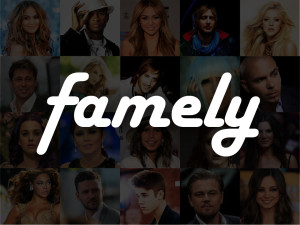
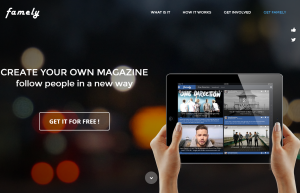
There’s been a lot of joking with the Famely guys around the office. We called this one the “Justin Bieber App” for the first few weeks. But Famely impressed us with their design skills, and their vision for something that really doesn’t exist in the market: an app that aggregates content about people you geek out about. It’s simple, and that’s the best part. Famely is a member of a growing tribe of aggregation services, but they’re early in the game when it comes to this level of segmentation in the market. The app, by the way, is beautiful, and the possibilities are easy to grasp. Why should celebrities be the fodder of gossip rags? Let’s make fame a little more social.
Gjirafa.com – Kosovo/Albania
 Gjirafa is the first search engine and news aggregator for Albanian, a lexically unique language spoken by over 12 million people worldwide. Using advanced Natural Language Processing algorithms, Gjirafa provides access to data that currently cannot be searched online.
Gjirafa is the first search engine and news aggregator for Albanian, a lexically unique language spoken by over 12 million people worldwide. Using advanced Natural Language Processing algorithms, Gjirafa provides access to data that currently cannot be searched online.

Where to start with these guys? The team is distinguished and full of fantastically talented people, with academic and business experience few of the teams can boast. When they came to us, we didn’t even know this market existed. But it does: Google doesn’t fully index pages in the Albanian language. No search engine does. But with the Albanian web growing exponentially, and Kosovo becoming a tech beacon in the region, it’s an incredible discovery for SY and for investors in Europe. It’s also great news for Albanian speakers, who are going to be heirs to the next Seznam. What’s not to like?
MyPrepApp.com – Czech Republic
 MyPrepApp is a mobile and online service to help students who lack motivation to pass their important exams. MyPrepApp creates customized preparation plans for students, and uses gamification and friend support to motivate them to fulfill their study plans and achieve better exam results. In the Czech Republic, MyPrepApp.com was launched as Hrave.cz on April 29th, 2014 generating its first revenue on that day.
MyPrepApp is a mobile and online service to help students who lack motivation to pass their important exams. MyPrepApp creates customized preparation plans for students, and uses gamification and friend support to motivate them to fulfill their study plans and achieve better exam results. In the Czech Republic, MyPrepApp.com was launched as Hrave.cz on April 29th, 2014 generating its first revenue on that day.
It’s no secret that now, more than ever, the exam is king in education, in Europe and in the United States and elsewhere. Unlike most e-learning product/services, MyPrepApp, based on the already running Hrave.cz, focuses on results. The approach sets them apart from a lot of players in this market, and it allows them to engage with independent content providers, instead of bigger publishers, giving them a competitive and creative edge.
SentiSquare.com – Czech Republic
SentiSquare is an online service for digital marketing managers who deal with high traffic and noise in social media and can’t comprehensively monitor what their consumers are saying about their brands around the globe. SentiSquare uses deep semantics to discover and summarize opinions hidden in multilingual content, giving a clear understanding of the main issues customers are facing.Not all great products come from entrepreneurial beginnings. SentiSquare started as a graduate project at the University of Plzen, and the team is very academically oriented. But what they don’t have in marketing and business experience, they more than compensate for with technical prowess. Their innovations are going to be of incredible value to clients with truly global customer engagement. If you’ve ever said a bad word about one of their customers, or a good one, they’ll know about it.
Warrant.ly – Serbia

You know that feeling, when you’re at the check-out line at Euronics, or Best Buy, or Tesco, and you know that there’s some extended warrantee they’re going to offer. But also you know something about how these kinds of products are supposed to be covered for a year by law. Or was it two? Or only 90 days? You throw the receipt in a drawer, and when the thing breaks 364 days later (which is guaranteed), you won’t know which receipt is which, and you won’t have the heart to fight back. No more.
Warrant.ly is the best kind of idea: a simple one, with a huge benefit. It will keep you up to date with your warrantees, and save you money. It will also keep manufacturers and retailers accountable to their customers, and give them the opportunity to upsell and cross-sell customers who have and use their products.
YourPlaceApp.com – Kazakhstan
YourPlace is a mobile and web app for places who want to foster strong loyal relationships with their customers. We use advanced statistics and targeting, a creative offer system, to create unlimited opportunities for venues to organize bonus and loyalty programs. Mobile users receive constantly improving targeted offers from their favorite places.Who doesn’t like to feel special and be recognized? Dial-a-deal apps may seem to a crowded market, but YourPlace has an approach we haven’t seen before. The key is in prompting restaurants and venues to engage with their customers by offering them deals, which the app helps them to generate. An owner may not know much about what kinds of deals their customers are attracted to, but YourPlace gives them a way of easily finding out, and capitalizing on the experience of other nearby locations, and of potential users. There’s no risk to trying YourPlace, but there’s plenty of potential benefit, for owners and customers alike.
[ssba]

